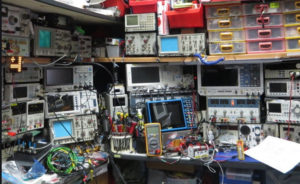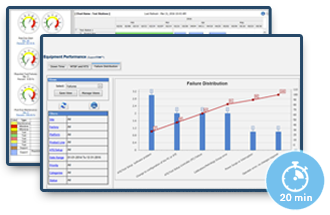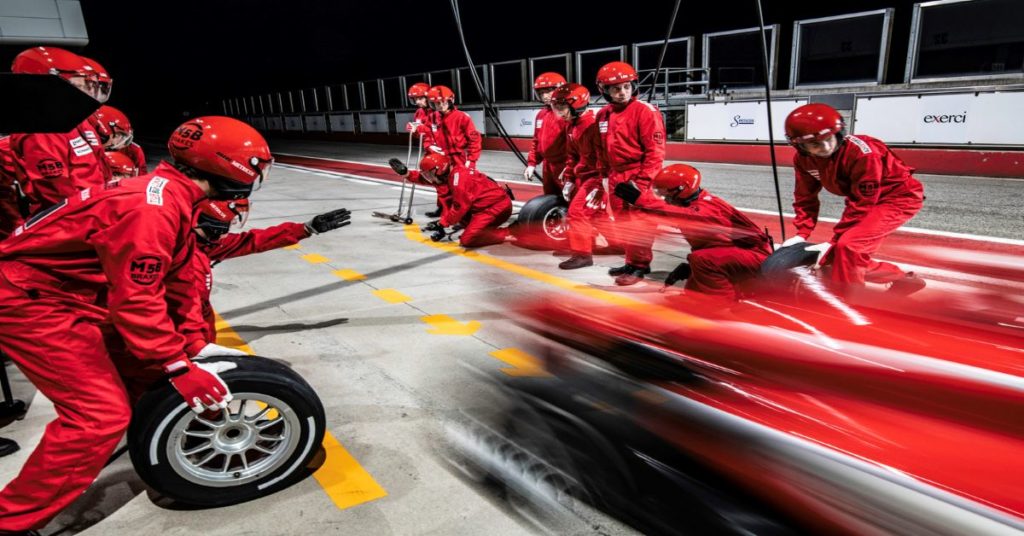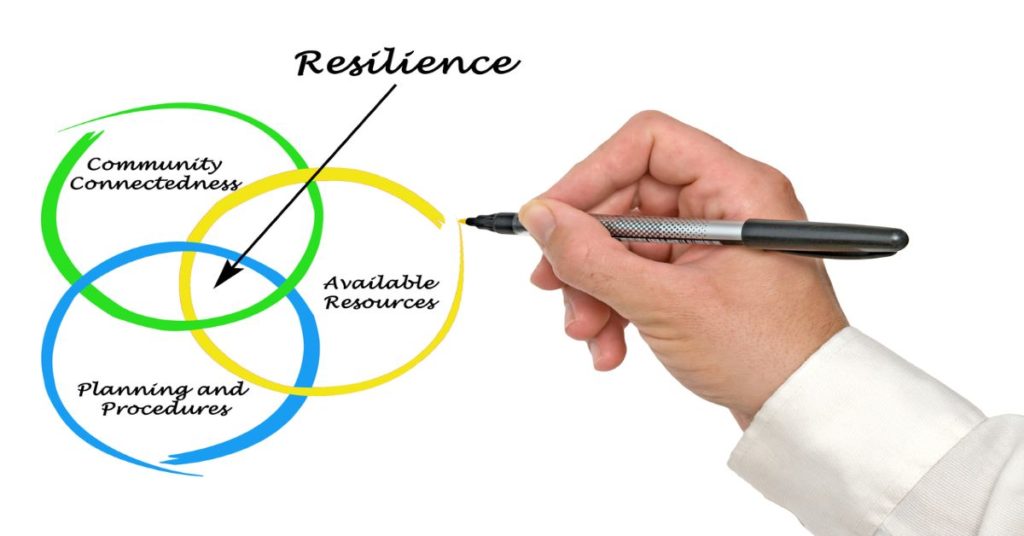

The Covid-19 pandemic has been a huge disruption, but if we are honest it has already shown us how unprepared we are to react to quickly changing events effectively. This capability to adapt is a competitive necessity today with or without the pandemic. To compete in the 4th Industrial Revolution requires resilience and speed and since our assets are often in the middle of our most critical processes their management is critical. Old ways of managing assets reduce organizational resilience. Resilience is particularly important with complex, high-cost, asset-intensive environments like those used to test products in engineering organizations or at the end of production lines. It is important because the only way to produce resilience when it isn’t built into the system is by throwing money at buying or renting more equipment instead of investing that money in new capabilities and growth.
Many of the problems you hear about with our Covid-19 response are typical asset management problems that we’ve been hearing about for years and that Sente has solved.
Common Asset Management Challenges / Failings
- We often don’t know where all of our equipment is or how much it is being used
- Users hoard equipment by making requests or “borrowing” assets they don’t new 1) right away, 2)for as long as requested, or 3) at all.
- They often “borrow” equipment in a process informally known as, “Midnight Acquisition.” The cascading costs of this practice on the entire organization of people using equipment are significant in lost time and trust.
- Users hoard services (calibration, maintenance, etc.) by making “ASAP” requests where they are unnecessary thereby reducing the capacity of the service team
- Users hoard knowledge because knowledge is power (like hoarding an asset or a service is power in the old paradigm – but only for the one doing the hoarding) even though it thwarts their team’s ability to innovate.
- Asset Management systems don’t integrate well with other systems or processes, both internally and externally, reducing resilience and speed when coordinating action with other teammates. This is especially true as people coordinating the planning and use of assets are not all “on-site” and able to “see” assets.
- Asset Management system accuracy is often not to the standard required to support process speed and resilience. This is a sure sign your asset management approach is obsolete.
- Asset Management solutions don’t address obsolescence. Equipment ages into obsolescence producing hidden costs and delays.
- Asset management metrics focus on the symptoms but not on the root causes and leading indicators anticipating speed, resilience, and costs problems to come
- Asset management is never a core competency so investment in tools and training/education of system users is not deemed important enough to pay for.
- Asset management teams are task-oriented rather than focusing on outcomes and plans that will produce them.
- Asset management services are often offered by companies with objectives to sell more, rent more, or service more of the equipment you are trying to manage.
All of these flaws make asset management systems that are similarly flawed untrustworthy and therefore inadequate for enabling the speed and acceleration required of today’s critical enterprise processes.
When users can’t get the assets they need they place blame for missing commitments on other people or entities like a game of hot potato and reinforce the distrust that causes the hoarding to begin with. The cycles of hoarding continue.

A Blinding Focus on Assets Hides the Real Issue
The real issue is cultural and behavioral. We don’t have good ways of dealing with all of the practices mentioned above that become habits and thwart our intentions to compete and win.
Admittedly, the pandemic is a much more complex situation than we have in any of our businesses for many different reasons beyond the scope of this blog post. However, if your company experiences some or all of the asset management issues highlighted above you have a great opportunity to improve your competitiveness by adopting a more strategic approach to asset management.
Old Solutions are Incomplete Partially Because Their View of Costs is Incomplete
In the aerospace industry, I still hear about old asset management initiatives from the 70s and 80s that were well known and successful at the time. Those solutions – and the vestiges that remain of them today — were invented to compete in a different time, when cost reduction at all costs was the key to success. Those programs drove some costs down through asset sales or avoiding an acquisition, rental or calibration procedure — but drove other costs higher. They saved dollars but cost themselves time and opportunity while frustrating equipment users. A more complete specification of costs necessary for designing solutions to successfully compete in the 4th Industrial Revolution includes the following costs: time, energy, money, and lost opportunity. Most asset management solutions try to account for the “money” cost, but the other costs, if not accounted for, produced very powerful and perverse incentives to hoard.
The “Other” Costs are the Silent Killers of Asset Management Programs
I am intimately familiar with the history of these aerospace solutions having been a practitioner in this space for almost 25 years. I met some of the early pioneers and listened to them in later years as they were frustrated when they couldn’t expand their footprint across their enterprises because other sites “didn’t get it.” It’s true, they didn’t get it. The solution was “one size fits all” and not every process (product development, manufacturing, MRO) has the same asset management requirement. Invariably when you force-fit a rigid, standardized solution into a situation it’s not designed for time and energy are wasted and with them the opportunity to have produced additional value. People aren’t dumb.
What Does Asset Management Program Weakness Look Like?
It looks like people don’t value it. It looks like a lack of participation in the process resulting in incomplete and inaccurate data stored in databases. You’ll notice the elimination of all or parts of asset management teams or their disintegration into lower-level “property” functions as economic waves take their toll during downturns and never recover in upturns. When all else fails, an over-exaggerated focus on financial engineering can be the beginning of the end for any real and sustainable competitive results with asset management.
When customers of asset management solutions still hoard equipment, it is because the asset management solution they use isn’t focused on the right costs. It is focused on symptoms, not the source of the costs. The vestiges of many programs are still visible, but trust me, if they don’t solve the problems outlined earlier they will all die (or slowly fade away), and with good reason.
How to Accelerate Performance of Your Asset Management Capability
First off any project for improvement needs to focus on all the costs I spoke about earlier. Secondly, it needs to be part of or support a larger “capital structures” plan to create growth and wealth for the enterprise. “Capital Structures” are things enterprises use to make money. Equipment is only one of those structures. The others are listed below.
- Human Capital: An enterprise’s most scarce resource. The solution must enable them to innovate and succeed. Better margins increase Return-on-Assets (ROA)
- Capital Inventory: There are the products and services your company sells and often uses equipment to design and produce. Higher market share, margins and profitability increase ROA.
- Operating Capital: This is the cash required to operate a business. An effective program optimizes utilization and reduces operating costs resulting in higher ROA.
- Financial Capital: The money available for investment in new capabilities. When operating capital is reduced and the capacity of the team to innovate is increased the company gets better returns from its investments. ROA goes up again.
Your solution also must align with larger enterprise strategic objectives and maintain that alignment. We have a series of “Governance” practices that are helpful with this alignment.
Let us Help you Turn Your Equipment into Assets!
Economists will remind us that equipment isn’t an asset unless it’s helping us make money. There are many levers for Asset Management that can be considered to increase the money-making capacity of your equipment, facilities, and infrastructure.
Now is a great time for thinking through what you can do to accelerate your business performance using asset management capabilities. Please reach out to me to schedule a conversation over the next couple of weeks to begin preparing for accelerating results when the pandemic is finally over. Let me or someone on the Sente team be of service to you and your team!
Request a Demo

See how Scireo aEAM Software drops asset and support costs by 50% while accelerating time-to-market 2X.
Relevant Content
Introducing Accelerated Enterprise Asset Management – aEAM
Asset-Intensive operations have their own set of unique challenges when considering how they will be transformed for speed and cost competitiveness post-Covid-19. aEAM is looking like an answer to CEOs who, emboldened by the initial adoption of collaboration tools made necessary by Covid-19, intend to accelerate broader changes required to drive speed and efficiency into…
Increase Equipment Utilization, Dramatically Increase Speed
Increase Equipment Utilization: Test Operations are High-Leverage Targets Test’s ubiquitous presence in mission-critical engineering, manufacturing, and MRO processes makes it uniquely high-leverage as a focus for cost containment and process acceleration. It was hands down why one customer-selected test equipment operations as the place to focus. Focus in this area is why another customer delivered…
Getting Resilient in a Time of Crisis
Our situation has changed meaning we now have new threats (the virus and getting sick) and new obligations (hygiene and physical distancing) required to help us take care of those threats. At the same time, none of the threats or obligations we had before have been relieved. Our organizations still must move with speed and…
Is Your Team Ready, Willing and Able to Make The Changes Required to Win?
In the asset management game, most solutions are focused on technology often at the exclusion of the asset management team and their customers. Just as the musician’s skill has a huge impact on the musical performance, such is also the case with asset management. It doesn’t mean that tools aren’t important, they are, but by…
Case Study: Aerospace Company Drives One Company Synergies
Like many aerospace companies, this one had many sites and different legacy cultures on each. See how they installed common resource management tools, increased utilization 3X and funded new programs.
Equipment Utilization Case Study: Space Company Leverages Assets
The hoarding culture was slowing this company down while impacting cost and quality. See how a journey to common processes and collaboration lead to a 50% reduction in assets as their business doubled.
Notable Quotes
“Today most companies seem to understand the importance of addressing cultural issues as part of their implementation but not everyone knows how to do it effectively. In our instance, savings was driven by collaboration and sharing that we never thought possible before Sente.”
Sr. VP, Semiconductor Industry










